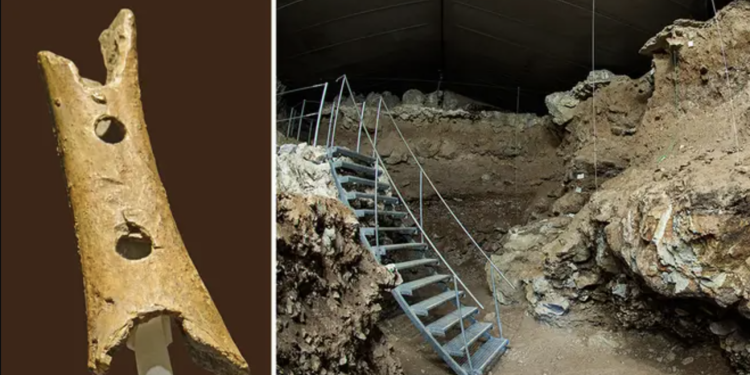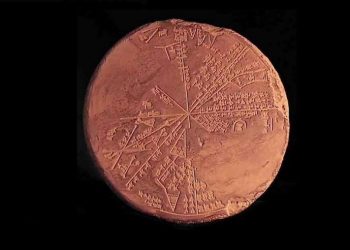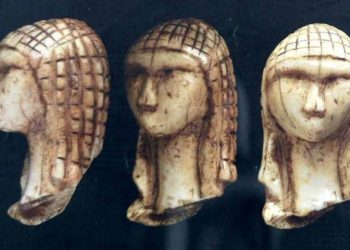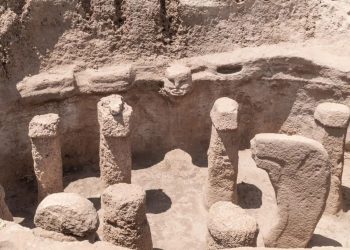Have you ever wondered what the oldest musical instrument in the world sounds like? Well, here is your chance.
Unlocking the mysteries of our ancient ancestors, a globally significant treasure resonates from Slovenia – a Neanderthal flute, an impressive 60,000 years old, that holds the title of the world’s oldest musical instrument. Unearthed in the Divje Babe cave near Cerkno, experts unanimously agree this relic showcases the Neanderthals’ musical prowess.
Masterpiece Crafted from Nature’s Orchestra
The marvel was meticulously crafted from the left femur of a juvenile cave bear and boasts four strategically placed holes. Following musical experiments, researchers have confirmed the size and placement of these holes to be intentional, designed explicitly for creating melodious tunes, not mere accidental markings.
Only the Divje Babe flute of all prehistoric instruments bears the distinctive Neanderthal hallmark. A breathtaking 20,000 years senior to similar artifacts crafted by anatomically modern humans, this discovery reframes our understanding of Neanderthals, demonstrating their advanced spiritual and artistic capabilities akin to ours.
A Historic Find at Divje Babe
In 1995, the groundbreaking discovery of the flute occurred during systematic excavations led by Ivan Turk in the Divje Babe cave, a prehistoric hub nestled 230 meters above the Idrijca River under the northeastern edge of the Šebrelje plateau. Initially home to cave bears, the site was intermittently occupied by Neanderthals, and later, modern humans, during the last ice age. Found near an ancient hearth, the flute lay within layers dating back an astonishing 60 to 50 thousand years.
Determined through electron spin resonance on bear teeth, the flute’s age, hovering between 60,000-50,000 years, places it in the Old Stone Age, or Paleolithic era. Alongside the flute, archaeologists unearthed Neanderthal-crafted stone tools, reinforcing the flute’s authenticity. This discovery solidifies the Divje Babe flute as an exceptional artifact, predating any known flute by an impressive 20,000 years.
What the Oldest Instrument in the World Sounds Like
The flute bears a distinctive feature: it is the creation of a Neanderthal individual. The Homo sapiens neanderthalensis, originated in Europe around 200,000 years ago, expanding to West Asia and the Middle East. Named after the Neanderthal site in Germany, where their fossils were first discovered in 1856, these ancient humans were adapted to withstand frigid climates. They mysteriously disappeared around 40,000 years ago, a topic sparking numerous theories.
This primeval instrument, consisting of a cave bear’s femur and four perforations, was created using primitive tools replicated in modern experiments. The Neanderthals used a sharp stone tool to etch a hollow into the bone, subsequently piercing it with a bone punch to create a hole. Multiple analyses and experiments have refuted any theory of these holes being mere animal bites or coincidental markings.
The Divje Babe Flute: Echoing Ancient Artistry
The Divje Babe flute stands as the oldest recognized musical instrument in the world, representing the Neanderthals’ capacity for music. This remarkable relic shatters the previously held notion of Neanderthals as primitive hominids, positioning them as innovative, emotionally complex beings capable of artistic expression.
Utilizing the preserved bone’s shape, mouthpiece, and CT scan results, a faithful reconstruction of the instrument reveals its wide-ranging melodic capabilities. Surpassing other reconstructed Paleolithic musical instruments in musical performance, it is ergonomically designed for a right-handed musician.
PLEASE READ: Have something to add? Visit Curiosmos on Facebook. Join the discussion in our mobile Telegram group. Also, follow us on Google News. Interesting in history, mysteries, and more? Visit Ancient Library’s Telegram group and become part of an exclusive group.











